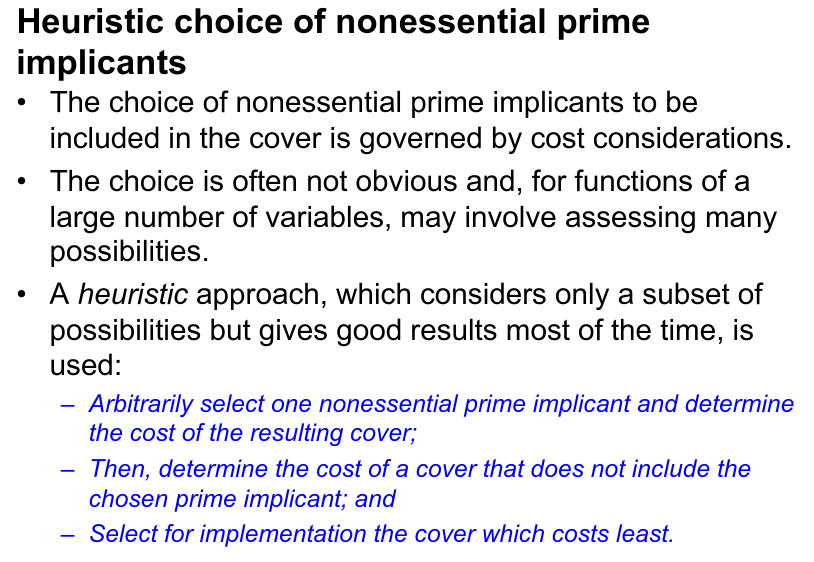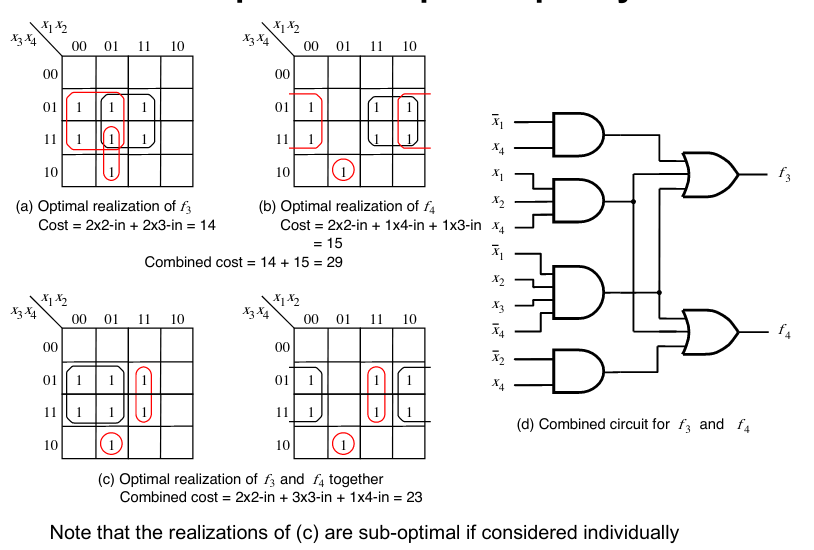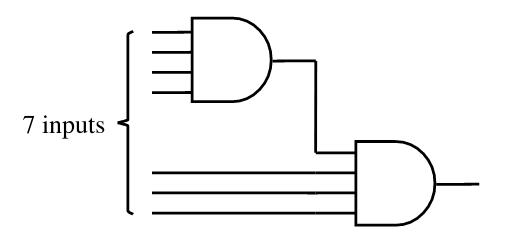Karnaugh Maps
Contents
A diagrammatic way to simplify functions by eliminating terms.
- The columns are set as the most significant variables
- The rows are set as the least significant variable
This creates a layout such that adjacent cell values only differ by one bit - This helps us identify common terms which can be taken out - "grey encoding"
The left-most and right-most columns are also considered to be adjacent - "torus"
- Find columns/rows which share a 1 bit
- Can extract that 'same' variable
two-variable

three-variable

four-variable

Minimisation Strategies
Terminology
Implicant - A product term that indicates a set of valuations that give a function result of 1
Prime Implicant - Cannot be combined into another implicant that has fewer literals
- Expanded by square/rectangular powers of 2 to for prime implicants
Cover - collection of implicants that account for all valuations
- A cover consisting of only prime implicants will lead to a minimal cost implementation
Cost - #gates + #inputs
- Input inverters are not counted!
Essential prime implicant
- A prime implicant that is not included in any other prime implicant

POS minimisation
It may be cheaper to implement a POS (Product of Sums) implementation over a SOP (Sum of Products) implementation.

A: SOP (6) vs POS (9)

POS (15)
Incomplete Functions
Often functions are not completely specified, we can treat these input conditions as "don't care", allowing them to be used as 0s or 1s.
Multiple-output Synthesis
If there are several similar function circuits, we may be able to reuse components to serve several functions.

Input Refactoring
Gates have a (physical) limit to the number of inputs they can have. It may be necessary to refactor the layout by having several layers of lesser-input gates.
- Decreases the complexity of each gate
- Increases the number of gates
- As gates are physical, there is an electrical delay
- Chaining gates adds more propagation delay
Example: 7-input AND
